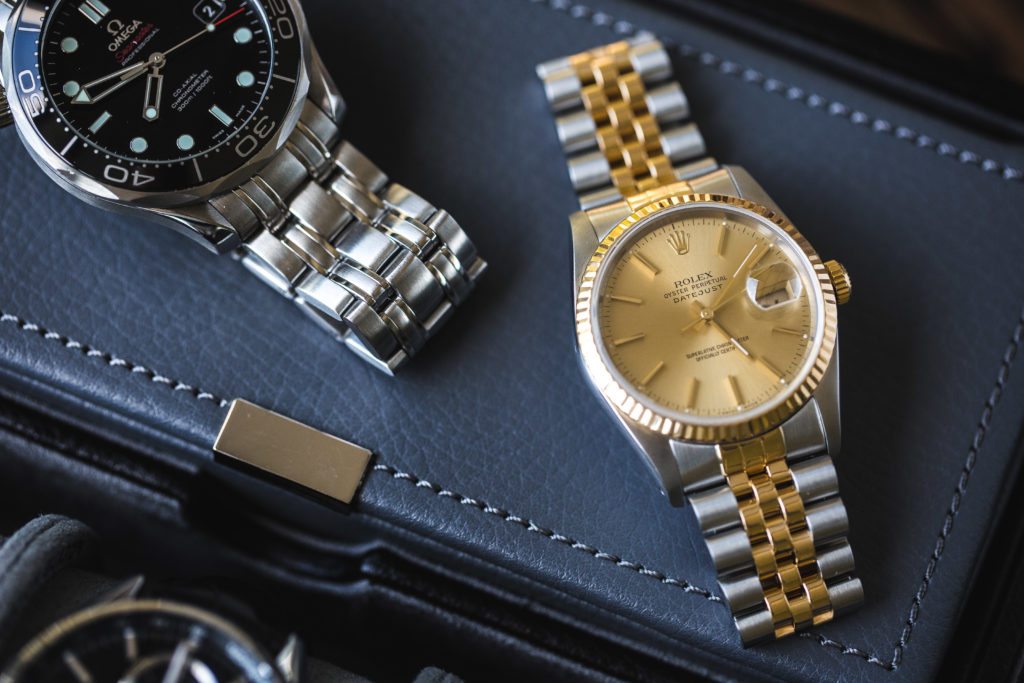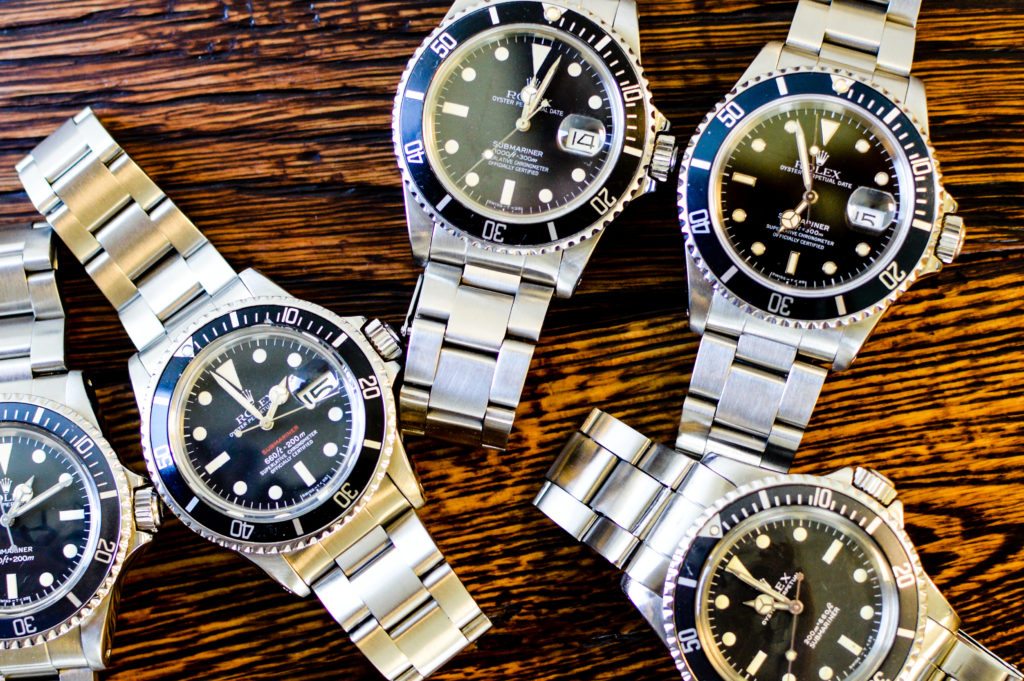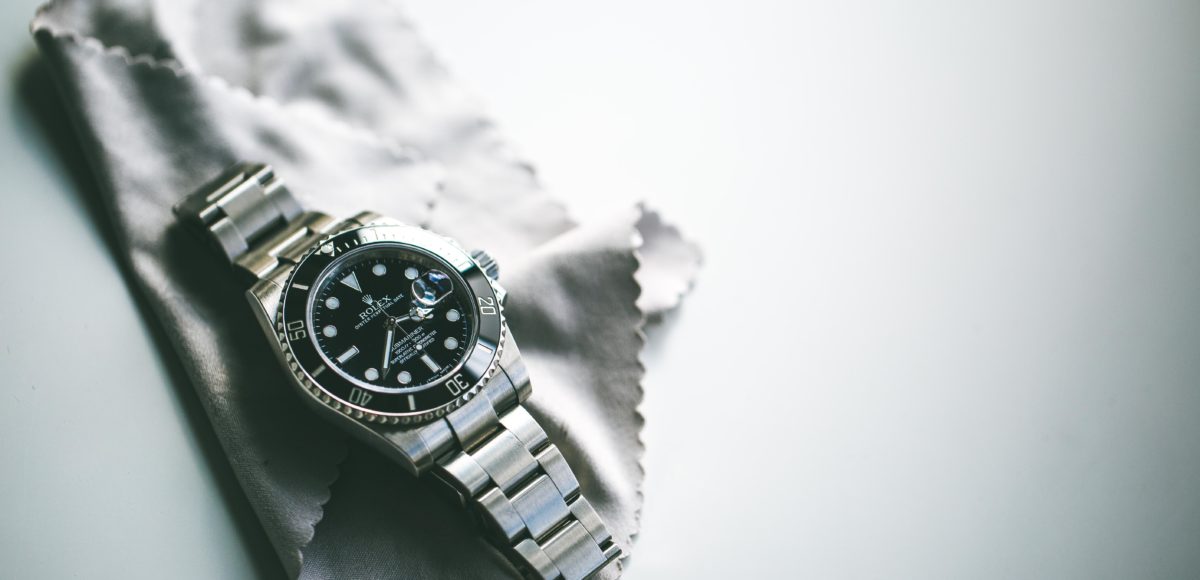A watch bracelet or strap is the portion of a timepiece that secures it to a wrist. Bracelets and straps come in a variety of colors and materials. There are many different types of materials that manufacturers use to make straps. These include nylon, leather, and rubber. Bracelets, however, are always metal. The upside of a metal bracelet is that it is classic and elevates the look of any luxury watch. The downside is that it can be prone to scratches and need special care.
Typically, watch bracelets are made from four different types of metals. They are steel, titanium, gold, and platinum. These metals are used on their own or in combination with each other. They can each be refinished, though depending on the severity of the scratches you may need to take your watch to a professional. However, there is maintenance you can do at home to help keep it in tip-top shape.

An two-tone Rolex and a stainless steel Omega.
To help keep your watch looking new you will want to polish your bracelet every few months. Scratches can be removed from the metal pretty easily. It just takes a little bit of time and effort. All you will need is a good quality polishing cloth and a little elbow grease. Just make sure that your polishing cloth that is appropriate for use on stainless steel surfaces.
Before you polish your watch, you will want to clean the bracelet to remove any dirt and debris.
When using the polishing cloth on the surface of your bracelet, keep the following tips in mind:
- Only use the cloth on the polished surface of your bracelet
- Don’t exert too much pressure – there is such a thing as overdoing it. You only need to use a moderate amount of pressure.
- Typically, you will only need to finish a few minutes polishing unless the scratches are deep or prominent.
- NEVER polish surfaces that have no scratches because you remove a fine layer of metal from the surface. This is because the surface hasn’t suffered any indentations in the form of scratches. In this case, less is more.
Following the steps above can help you ensure that your watch retains it shiny newness for as long as possible. With proper care, a luxury timepiece will last for generations.
However, we would be remiss if we didn’t mention that polishing your watch band is largely preferential – especially in vintage watches. To many in the watch world, part of a watch’s character and charm is its provenance. This is really just a fancy way of saying the watch’s history. Part of a vintage watch’s provenance are the scratches and dings on the case and bracelet. Usually, this patina indicates a well-loved timepiece and collector’s love it. Oftentimes, polishing a vintage watch will actually lessen its value.

A collection of vintage Rolex Submariners.
Sometimes home polishing isn’t enough for very deep scratches and you may need a professional. As always, before you do anything to your watch, be sure to check the manual. You want to make sure that you don’t void any manufacturer’s warranty or damage your watch.
For more watch care visit our Watch Care 101.
Get More Articles Like This in Your Inbox
We're constantly creating great content like this. So, why not get it delivered directly to your inbox? By subscribing you agree to our Privacy Policy but you can unsubscribe at any time.






